This article was co-authored by Mohiba Tareen, MD. Mohiba Tareen is a board certified Dermatologist and the founder of Tareen Dermatology located in Roseville, Maplewood and Faribault, Minnesota. Dr. Tareen completed medical school at the University of Michigan in Ann Arbor, where she was inducted into the prestigious Alpha Omega Alpha honor society. While a dermatology resident at Columbia University in New York City, she won the Conrad Stritzler award of the New York Dermatologic Society and was published in The New England Journal of Medicine. Dr. Tareen then completed a procedural fellowship which focused on dermatologic surgery, laser, and cosmetic dermatology.
There are 11 references cited in this article, which can be found at the bottom of the page.
wikiHow marks an article as reader-approved once it receives enough positive feedback. In this case, several readers have written to tell us that this article was helpful to them, earning it our reader-approved status.
This article has been viewed 381,173 times.
Ouch! Did you touch something that burned and blistered your finger? Blisters and red skin indicate a second-degree burn. This can be very painful and lead to complications if not properly treated. You can treat a blistering burn on your finger by administering prompt first aid, cleaning and caring for the wound, and promoting recovery.
Steps
Administering Prompt First Aid
-
1Plunge your finger into cool water. After removing your finger from what burned you, place it under cool, running water. Hold it in the water for 10-15 minutes.[1] You can also wrap it in a towel soaked with cool tap water for the same amount of time, or submerge the body part in a container of water if you don't have access to a running tap.[2] This can minimize pain, decrease swelling, and prevent tissue damage.[3]
- Avoid placing your finger under cold or warm water or in ice. This can make the burning and blistering worse.[4]
- Cool water cleans the burn, reduces swelling and promotes quicker healing with less scarring
-
2Remove jewelry or other items under cool water. Cold can help reduce swelling. While you are cooling off your finger with water or a damp towel, take off rings or other tight items around your fingers. Do this as quickly and gently as possible before the area swells. This may minimize the discomfort of removing them when dry. It also allows you to better treat the burned and blistered finger.[5]Advertisement
-
3Avoid breaking blisters. You may immediately notice small blisters that are no bigger than a fingernail. Leave these intact to prevent bacteria growth and infection. If the blisters break open, gently clean them with mild soap and water. Then apply and antibiotic ointment and nonstick gauze bandage.[6]
- Get prompt medical attention if the blister is large. Your doctor may need to break it to minimize the risk of it breaking on its own or developing an infection.
-
4Seek emergency medical attention. In some cases, burns with blisters may require immediate medical attention. If you have any of the following symptoms, go to your nearest emergency room or urgi-care center:[7]
- Bad blistering
- Intense or no pain
- Burn covers your entire finger or fingers
Cleaning and Dressing Your Burn
-
1Wash the burned and blistered area. Use a mild soap and water to gently clean the affected finger. Rub the area gently, being careful to not break any blisters. This can minimize the risk of infection.[8]
- Treat each finger with a blistering burn separately.
-
2Air-dry your finger. A burn develops for an additional 24-48 hours after contact. Things such as patting it with a towel can make your pain and discomfort worse. Allow your finger to air dry before dressing it with ointments and bandages. This can draw heat from the burn, reduce the chances of bursting a blister, and minimize your pain.[9]
-
3Cover with sterile gauze. Before applying any ointments, let the burn cool. Placing a loose, sterile bandage over your blister allows the area to cool and can protect it from bacteria. Change the gauze if you have any oozing or broken blisters. Keeping the area clean and dry can also prevent infection.
-
4Apply ointment to unbroken skin. After 24-28 hours, put on a healing and protective ointment. Do this only if the blisters are still intact and the skin is unbroken.[10] Spread a thin layer of any of the following over the top of the burned and blistered area:[11]
- Antibiotic ointment
- Unscented, alcohol-free moisturizers
- Honey
- Silver sulfadiazine cream
- Aloe gel or cream[12]
-
5Stay away from home remedies. An old wives’ tale suggests using butter on burns. However, butter retains heat and can cause infection. To prevent the burn retaining heat and protect the area from infection, avoid covering your burn with household treatments such as butter and substances like:[13]
- Toothpaste
- Oil
- Cow dung
- Beeswax
- Bear fat
- Eggs
- Lard
Recovering from Blisters and Burns
-
1
-
2Change dressings daily. Keep your bandages as clean and dry. Change them at least once every day. If you notice any oozing or wetness, put on a new bandage. This can protect the blistered burn and prevent infection.[16]
- Soak a dressing stuck to the burn or blister in clean, cool water or saline.[17]
-
3Avoid friction and pressure. Bumping into and touching things as well as putting friction and pressure on your finger can make a blister pop. This can disrupt the healing process and lead to infection. Use your other hand or fingers and avoid wearing anything tight against the area.[18]
-
4Consider a tetanus shot. Blistering burns can become infected, including with tetanus. If you haven’t had a booster tetanus shot in 10 years, ask your doctor to give you one. This may prevent you from developing tetanus because of the burn.[19]
-
5Watch for signs of infection. Your burn may take some time to heal. In some cases, you could develop an infection, as burns can easily become infected. This could lead to bigger problems such as losing mobility in your finger. Seek immediate medical attention if you have any of the following signs of infection in your wound:[20]
- Oozing pus
- Increased pain, redness and/or swelling
- Fever[21]
Expert Q&A
Did you know you can get expert answers for this article?
Unlock expert answers by supporting wikiHow
-
QuestionShould you put anything on a blistered burn?
 Mohiba Tareen, MDMohiba Tareen is a board certified Dermatologist and the founder of Tareen Dermatology located in Roseville, Maplewood and Faribault, Minnesota. Dr. Tareen completed medical school at the University of Michigan in Ann Arbor, where she was inducted into the prestigious Alpha Omega Alpha honor society. While a dermatology resident at Columbia University in New York City, she won the Conrad Stritzler award of the New York Dermatologic Society and was published in The New England Journal of Medicine. Dr. Tareen then completed a procedural fellowship which focused on dermatologic surgery, laser, and cosmetic dermatology.
Mohiba Tareen, MDMohiba Tareen is a board certified Dermatologist and the founder of Tareen Dermatology located in Roseville, Maplewood and Faribault, Minnesota. Dr. Tareen completed medical school at the University of Michigan in Ann Arbor, where she was inducted into the prestigious Alpha Omega Alpha honor society. While a dermatology resident at Columbia University in New York City, she won the Conrad Stritzler award of the New York Dermatologic Society and was published in The New England Journal of Medicine. Dr. Tareen then completed a procedural fellowship which focused on dermatologic surgery, laser, and cosmetic dermatology.
FAAD Board Certified Dermatologist
-
QuestionWill baking soda or corn starch alleviate a burn?
 Marsha Durkin, RNMarsha Durkin is a Registered Nurse and Laboratory Information Specialist for Mercy Hospital and Medical Center in Illinois. She received her Associates Degree in Nursing from Olney Central College in 1987.
Marsha Durkin, RNMarsha Durkin is a Registered Nurse and Laboratory Information Specialist for Mercy Hospital and Medical Center in Illinois. She received her Associates Degree in Nursing from Olney Central College in 1987.
Registered Nurse
Things You’ll Need
- Access to cool water
- Sterile gauze or bandages
- Medical tape
- Ointment
- Over-the-counter pain reliever
References
- ↑ http://www.mayoclinic.org/first-aid/first-aid-burns/basics/art-20056649
- ↑ Mohiba Tareen, MD. FAAD Board Certified Dermatologist. Expert Interview. 26 March 2020.
- ↑ http://www.nlm.nih.gov/medlineplus/ency/article/000030.htm
- ↑ http://woundcaresociety.org/treat-burns-hands-blisters
- ↑ http://www.mayoclinic.org/first-aid/first-aid-burns/basics/art-20056649
- ↑ http://www.mayoclinic.org/first-aid/first-aid-burns/basics/art-20056649
- ↑ http://www.newhealthguide.org/Burns-On-Fingers.html
- ↑ http://www.newhealthguide.org/Burns-On-Fingers.html
- ↑ http://www.nlm.nih.gov/medlineplus/ency/article/000030.htm
- ↑ http://www.newhealthguide.org/Burns-On-Fingers.html
- ↑ http://www.newhealthguide.org/Burns-On-Fingers.html
- ↑ Mohiba Tareen, MD. FAAD Board Certified Dermatologist. Expert Interview. 26 March 2020.
- ↑ http://woundcaresociety.org/treat-burns-hands-blisters
- ↑ Mohiba Tareen, MD. FAAD Board Certified Dermatologist. Expert Interview. 26 March 2020.
- ↑ http://woundcaresociety.org/treat-burns-hands-blisters
- ↑ http://woundcaresociety.org/treat-burns-hands-blisters
- ↑ http://woundcaresociety.org/treat-burns-hands-blisters
- ↑ http://woundcaresociety.org/treat-burns-hands-blisters
- ↑ http://www.mayoclinic.org/first-aid/first-aid-burns/basics/art-20056649
- ↑ http://www.mayoclinic.org/first-aid/first-aid-burns/basics/art-20056649
- ↑ http://woundcaresociety.org/treat-burns-hands-blisters
About This Article
To treat a blistering burn on your finger, hold it under cool, running water for 10 to 15 minutes. Make sure to avoid putting your finger in ice, which can make the blistering worse. In order to minimize the risk of infection, wash the area with mild soap and water, being careful not to break any blisters, which can lead to bacteria growth. Then, allow your finger to air-dry and cover it with a loose, sterile bandage. Replace the bandage as needed to keep the area clean and dry. To learn how to manage the pain of a blistering burn on your finger, keep reading!


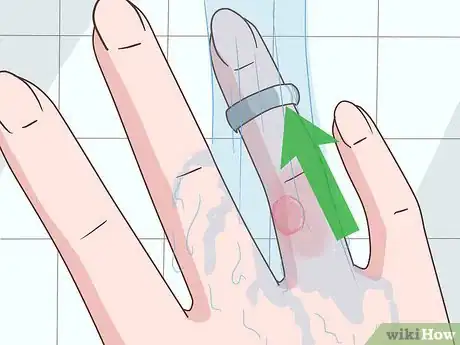
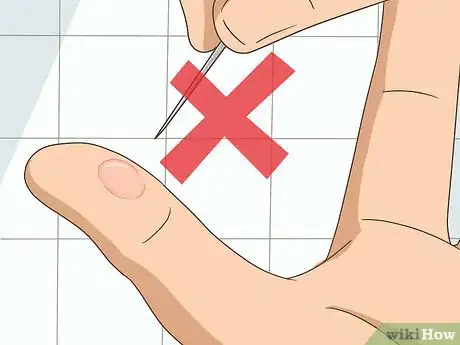
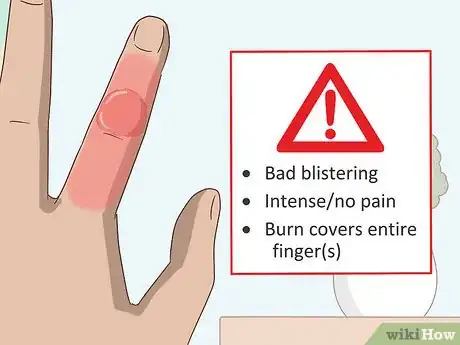
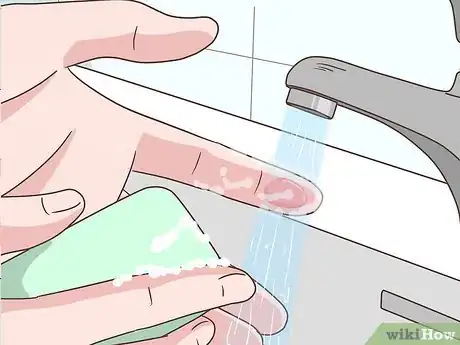
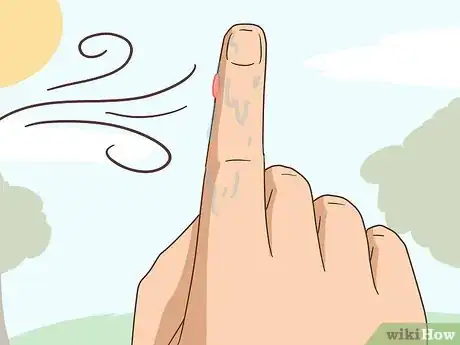
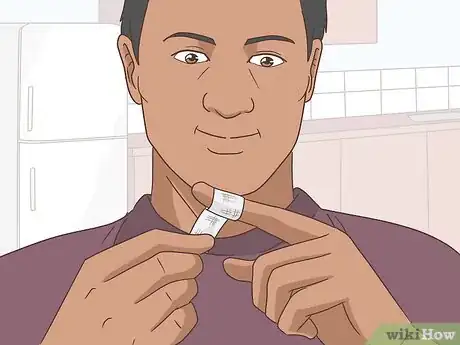
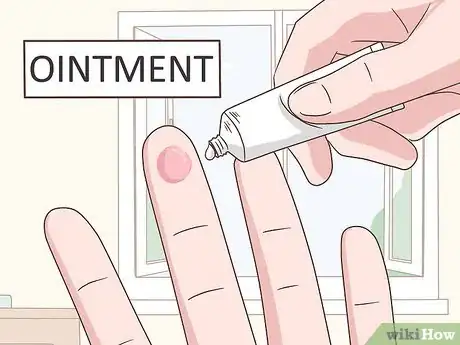
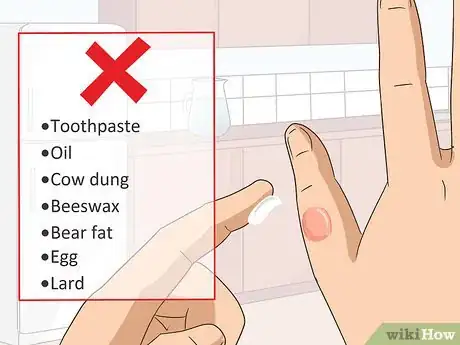
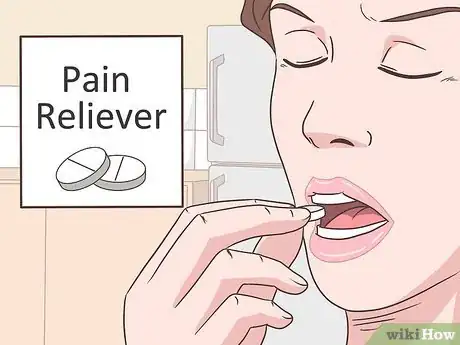
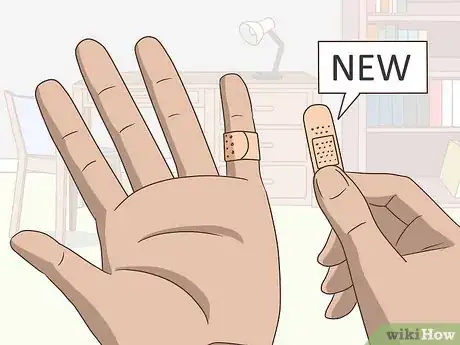
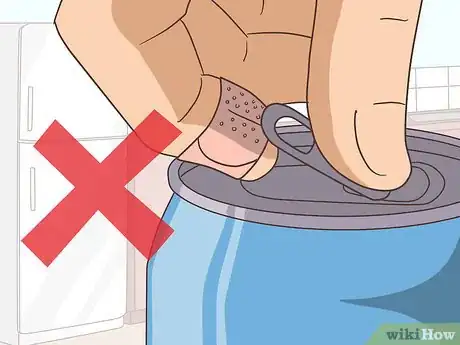
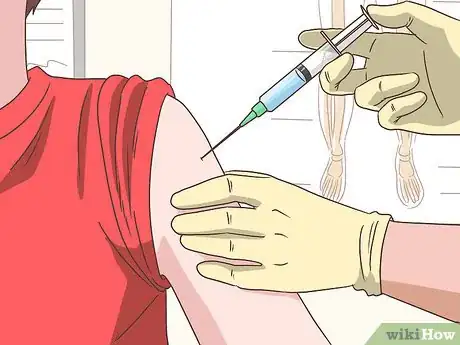
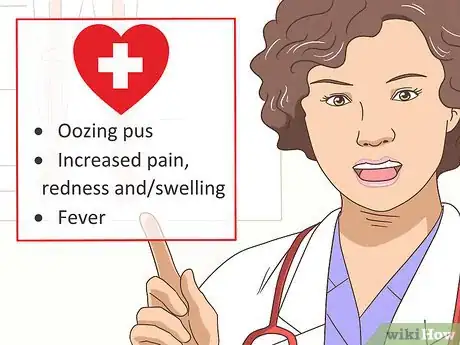

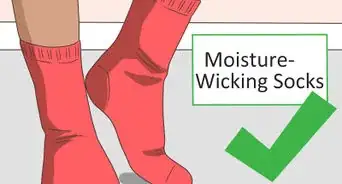



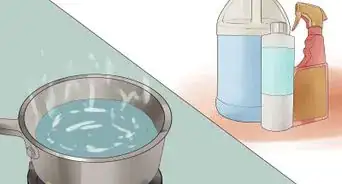
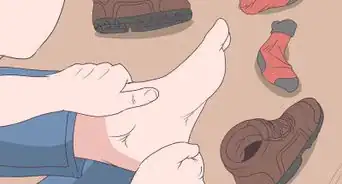
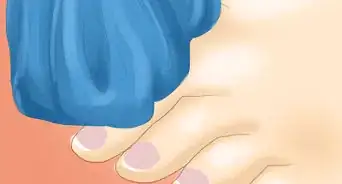



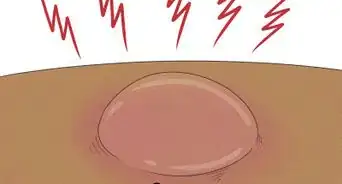












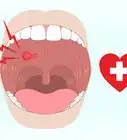




































Medical Disclaimer
The content of this article is not intended to be a substitute for professional medical advice, examination, diagnosis, or treatment. You should always contact your doctor or other qualified healthcare professional before starting, changing, or stopping any kind of health treatment.
Read More...